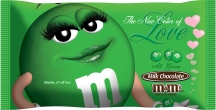U.S. mandatory traceability system proposed
IoPP to host REACH webinar
For Mars, green is the new pink
European snack in peelable can

by Pan Demetrakakes
Executive Editor
As food processors, regulators, nutritionists and others puzzle over how best to deliver nutritional information to consumers, the answer may be in one word: Simplify.
The multiplicity of information given to consumers on food labels, both in America and abroad, is confusing many of them to the point where they’re disregarding it, according to some recent studies.
The biggest problem is that many consumers simply don’t have the knowledge to interpret correctly the information on the labels. For instance, a survey of British consumers by the European Food Information Council showed that 35% incorrectly believe that children need more calories than adults-misinformation which is significant in the face of increasing child obesity. That study also showed that only one in four shoppers actually looked for nutrition information on food packaging in supermarkets. Another British study, by the Food Standards Agency (FSA), showed consumer confusion over understanding information about portion sizes and interpreting and using numerical information.
The answer may be to boil down information to a single, easily understood piece of data. That’s already being done to some extent in the UK with the “traffic light” symbols used on food packaging by some retailers for store brands. The plan assigns red, yellow and green symbols to foods based on nutritional standards. Studies show good awareness of the plan, although the FSA survey revealed some confusion over the meaning of the symbols.
A University of Washington professor is putting forward a plan he calls the “nutrient rich foods approach.” Adam Drewnowski, director of the university’s Center for Public Health Nutrition, outlined an approach that would classify foods by the amount of vitamins and other positive nutrients they supply, versus their calories per serving. Foods that were heavy on positive nutrients and light on calories would get high ratings, which could be expressed as a number or symbol.
Drewnowski presented this approach on behalf of theNutrient Rich Foods Coalition, a coalition of 12 food commodity associations like the Grain Foods Foundation and the Florida Department of Citrus. A study by the coalition showed that 54% of consumers were overwhelmed by nutrition information, and 78% were looking for a simple, practical tool for nutrition advice.
TOP DEVELOPMENTS
U.S. mandatory traceability system proposedTo help improve food safety in the U.S., the Food and Drug Administration (FDA) is considering a mandatory traceability system. While some produce firms have voluntary traceability programs, lawmakers are saying that a mandatory program is overdue and would help U.S. regulators improve safety and restore consumer confidence, which has plummeted because of contamination events with tomatoes, pet food and peanut butter. David Acheson, the FDA’s associate commissioner for food protection, says that he does not believe the FDA has explicit authority to mandate a tracking system or a specific technology (such as radio frequency identification).
IoPP to host REACH webinar
The Institute of Packaging Professionals will be hosting a webinar to discuss the potential effects of Europe’s REACH (Registration, Evaluation, Authorisation and Restriction of Chemicals) regulations. The one-hour webinar will take place Oct. 17 at 10 a.m. CDT and costs $95 U.S. for members and $105 for non-members. The speaker will be Sebastien Louvion, an associate with Mayer Brown Int’l, a Brussels, Belgium-based legal partnership. To register, visit www.iopp.org/webseminars, or call 630-696-4010.

NEW PACKAGES
For Mars, green is the new pinkMars Inc. is going green for Valentine’s Day. Its iconic M&Ms candy will appear with striking green-themed graphics in a promotional version starting next January. The graphics center on “Ms. Green,” a vampish anthropomorphized M&M’s piece introduced in 1997. The 8- and 14-ounce pouches will contain all green M&M’s. Mars is betting that the almost-all-green packages will stand out among the sea of pink and red in Valentine’s-related displays.

A healthy snack marketed in Western Europe is packaged in metal cans with peelable lids from the European subsidiary ofCrown Holdings. Maïs & Fruit, from France’s Bonduelle Group, is sweet corn mixed with either pineapple or a mango and papaya blend. The product comes in 130-milliliter bowl-shaped cans that feature Crown’s PeelSeam peelable lids and a plastic spoon, sold with two bowls in a paperboard sleeve. Maïs and Fruit was introduced in the summer in Holland and is now also marketed in France, Italy, Spain and Germany.
